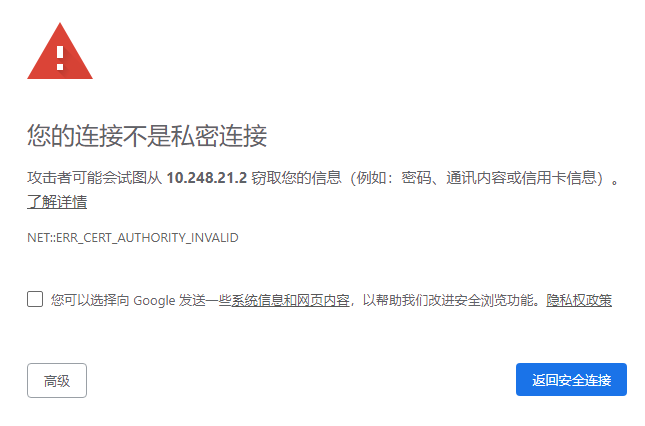Kubernetes挂载常用资源
介绍下用k8s挂载一些常用的资源
当前版本Kubernetes版本:1.12.2
env
env
env:
- name: GIT_REPO
value: 'ssh://git@127.0.0.1:22/a/b.git'嵌套env
env:
- name: spring.profiles.active
value: 'product'
- name: MY_POD_IP
valueFrom:
fieldRef:
fieldPath: status.podIP
- name: GOMS_API_HTTP_ADDR
value: 'http://$(MY_POD_IP):9090'configMap
注意一下,修改configmap不会导致容器里的挂载的configmap文件/环境变量发生改变;删除configmap也不会影响到容器内部的环境变量/文件,但是删除configmap之后,被挂载的pod上面会出现一个warnning的事件
Events:
Type Reason Age From Message
---- ------ ---- ---- -------
Warning FailedMount 64s (x13 over 11m) kubelet, cn-shenzhen.i-wz9498k1n1l7sx8bkc50 MountVolume.SetUp failed for volume "nginx" : configmaps "nginx" not foundconfig map写的很清楚了,这里恬不知耻得copy一下
注意,configmap有1M的限制,一般用来挂载小型配置,大量配置建议上配置中心
挂载单一项
apiVersion: v1
kind: Pod
metadata:
name: dapi-test-pod
spec:
containers:
- name: test-container
image: k8s.gcr.io/busybox
command: [ "/bin/sh", "-c", "env" ]
env:
# Define the environment variable
- name: SPECIAL_LEVEL_KEY
valueFrom:
configMapKeyRef:
# The ConfigMap containing the value you want to assign to SPECIAL_LEVEL_KEY
name: special-config
# Specify the key associated with the value
key: special.how
restartPolicy: Never表示挂载special-config这个configmap的special.how项
挂载整个configmap
apiVersion: v1
kind: Pod
metadata:
name: dapi-test-pod
spec:
containers:
- name: test-container
image: k8s.gcr.io/busybox
command: [ "/bin/sh", "-c", "env" ]
envFrom:
- configMapRef:
name: special-config
restartPolicy: Never参考:
fieldRef
可以挂载pod的一些属性
env:
- name: MY_POD_IP
valueFrom:
fieldRef:
fieldPath: status.podIP
Selects a field of the pod: supports metadata.name, metadata.namespace, metadata.labels, metadata.annotations, spec.nodeName, spec.serviceAccountName, status.hostIP, status.podIP.
resourceFieldRef
Selects a resource of the container: only resources limits and requests (limits.cpu, limits.memory, limits.ephemeral-storage, requests.cpu, requests.memory and requests.ephemeral-storage) are currently supported.
英文介绍得很明白,用来挂载当前yaml里面container的资源(CPU/内存)限制,用得比较少啦其实.此外还可以结合downloadAPI
注意containerName不能配错,不然pod状态会变成CreateContainerConfigError
env:
- name: a
valueFrom:
resourceFieldRef:
containerName: nginx-test2
resource: limits.cpusecretKeyRef
Selects a key of a secret in the pod's namespace
env:
- name: WORDPRESS_DB_USER
valueFrom:
secretKeyRef:
name: mysecret
key: username
- name: WORDPRESS_DB_PASSWORD
valueFrom:
secretKeyRef:
name: mysecret
key: password参考:
- Kubernetes中Secret使用详解
- https://kubernetes.io/docs/reference/generated/kubernetes-api/v1.12/#envvarsource-v1-core
目录/文件类挂载
k8s可以挂载的资源实在是太多,这里挑一些比较有代表性的来讲一下
这一类资源一般要先在spec层级定义volumes,然后在containers定义volumeMounts,有种先声明,再使用的意思
hostPath(宿主机目录/文件)
- 既有目录/文件用
Directory/File+nodeSelector
但是用了nodeSelector之后,以后的伸缩都会在匹配的节点上,如果节点只有1个,副本集设置得超出实际节点可承受空间,最终将导致单点问题,这个要注意下 - 应用启用时读写空文件用
DirectoryOrCreate或者FileOrCreate
以下演示第一种方案
#给节点打上标签(这里省略)
kubectl get node --show-labels
apiVersion: apps/v1beta2
kind: Deployment
metadata:
labels:
app: nginx-test2
name: nginx-test2
namespace: test
spec:
progressDeadlineSeconds: 600
replicas: 1
revisionHistoryLimit: 2
selector:
matchLabels:
app: nginx-test2
strategy:
rollingUpdate:
maxSurge: 1
maxUnavailable: 1
type: RollingUpdate
template:
metadata:
labels:
app: nginx-test2
spec:
containers:
- image: 'nginx:1.15.4-alpine'
imagePullPolicy: Always
name: nginx-test2
resources: {}
terminationMessagePolicy: File
volumeMounts:
- name: host1
mountPath: /etc/nginx/sites-enabled
- name: host2
mountPath: /etc/nginx/sites-enabled2/a.com.conf
nodeSelector:
kubernetes.io/hostname: cn-shenzhen.i-wz9aabuytimkomdmjabq
dnsPolicy: ClusterFirst
restartPolicy: Always
schedulerName: default-scheduler
securityContext: {}
terminationGracePeriodSeconds: 30
volumes:
- name: host1
hostPath:
path: /root/site
type: Directory
- name: host2
hostPath:
path: /root/site/a.com.conf
type: File configMap
单项挂载(第1种)
这种挂载会热更新,更改后大约10秒后能看到变化
volumeMounts:
- name: config-vol
mountPath: /etc/config
volumes:
- name: config-vol
configMap:
name: log-config
items:
- key: log_level
path: log_level单项挂载(第2种)
这种挂载方式不会热更新
volumeMounts:
- name: nginx
mountPath: /etc/nginx/nginx.conf
subPath: nginx.conf
volumes:
- name: nginx
configMap:
name: amiba-nginx 完全挂载
这种挂载会热更新,更改后大约10秒后能看到变化
volumeMounts:
- name: config-vol
mountPath: /etc/config
volumes:
- name: config-vol
configMap:
name: log-configsecret
单项挂载
volumes:
- name: secrets
secret:
secretName: mysecret
items:
- key: password
mode: 511
path: tst/psd
- key: username
mode: 511
path: tst/usr完全挂载
这里用了特定权限去挂载文件,默认好像是777
volumeMounts:
- name: sshkey
mountPath: /root/.ssh
volumes:
- name: sshkey
secret:
secretName: pull-gitea
defaultMode: 0400 kubectl create secret generic pull-gitea \
--from-file=id_rsa=/Volumes/D/temp/id_rsa \
--from-file=id_rsa.pub=/Volumes/D/temp/id_rsa.pub \
--from-file=known_hosts=/Volumes/D/temp/known_hosts \比如这个模式创建出来的secret,容器里面/root/.ssh目录就会有id_rsa,id_rsa.pub,known_hosts3个文件
downwardAPI
参考链接:






